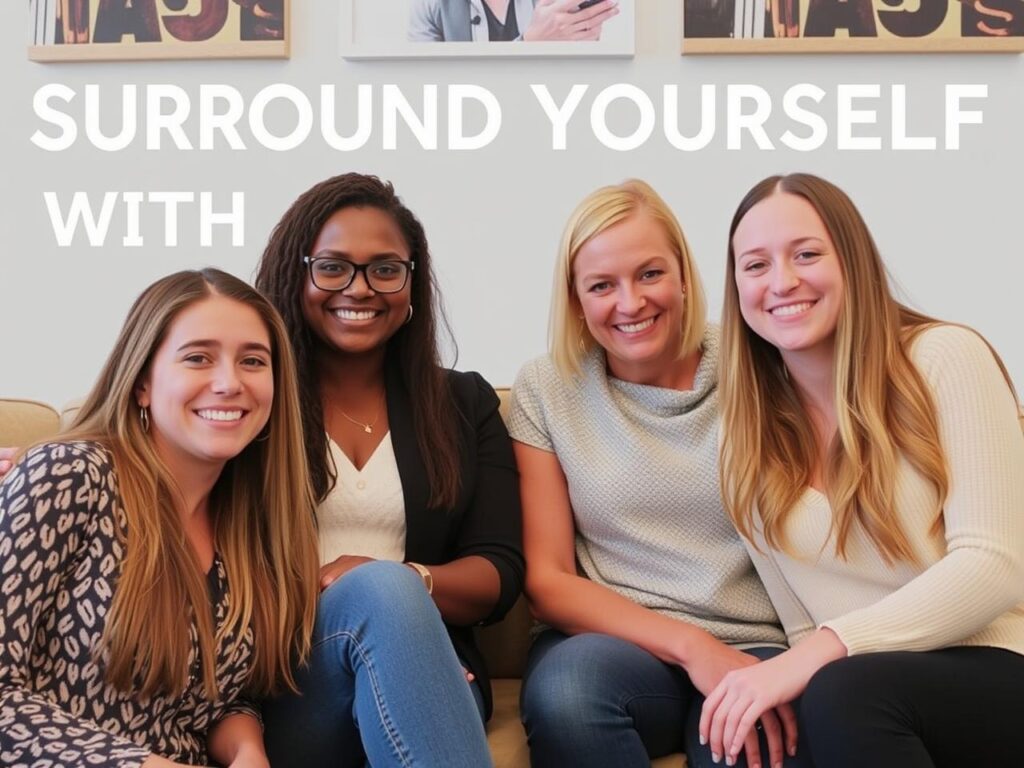How to Look Confident When You Have No Idea What’s Going On
The “fake it till you make it” approach is a widely recognized strategy in professional and personal growth contexts. This concept encourages individuals to project confidence and competence, even when they may feel uncertain or unprepared. The goal is not to deceive, but to present a self-assured demeanor that can help build trust and respect from others.
This mindset can be particularly useful in overcoming self-doubt and imposter syndrome. This approach is often applied in high-stakes situations such as job interviews, public speaking events, or important business meetings. By displaying confidence and composure, individuals may increase their chances of success and create favorable impressions.
The “fake it till you make it” mentality can also motivate people to step outside their comfort zones and embrace new challenges with greater courage. While continuous learning and skill development remain crucial, adopting this mindset can provide a temporary boost in confidence and self-assurance. It is important to note that this strategy should be balanced with genuine efforts to improve one’s abilities and knowledge over time.
Key Takeaways
- Embracing the “Fake It Till You Make It” mentality can help boost confidence and push you out of your comfort zone.
- Mastering the art of non-verbal communication can help convey confidence and assertiveness in any situation.
- Dressing the part can make a significant impact on how you are perceived and can boost your own confidence.
- Practicing active listening and asking questions can help build rapport and show genuine interest in others.
- Using humor to lighten the mood can help diffuse tense situations and create a more positive atmosphere.
Master the Art of Non-Verbal Communication
Non-verbal communication plays a crucial role in how we are perceived by others. Our body language, facial expressions, and gestures can convey a wealth of information about our thoughts and feelings, often more so than our words. Mastering the art of non-verbal communication can help individuals project confidence, approachability, and professionalism in various social and professional settings.
By maintaining open body language, making eye contact, and using appropriate gestures, individuals can create a positive and engaging presence that draws others in. Additionally, being mindful of non-verbal cues can also help individuals better understand the thoughts and feelings of those around them. By paying attention to subtle signals such as posture, facial expressions, and tone of voice, individuals can gain valuable insights into the emotions and intentions of others.
This heightened awareness can facilitate more effective communication and foster stronger connections with colleagues, clients, and friends. Ultimately, mastering the art of non-verbal communication can help individuals become more perceptive communicators and project a confident and approachable image in any situation.
Dress the Part

The way we dress has a significant impact on how we are perceived by others. Whether we realize it or not, our clothing choices send powerful signals about our personality, professionalism, and attention to detail. Dressing the part for a given occasion or setting can help individuals project a polished and put-together image that commands respect and admiration.
Whether it’s a formal business meeting, a casual networking event, or a social gathering, dressing appropriately shows that you respect the occasion and the people you are meeting. In professional settings, adhering to dress codes and industry norms can help individuals convey a sense of competence and professionalism. By dressing in well-fitting, clean, and appropriate attire, individuals can create a positive first impression that sets the stage for successful interactions.
Additionally, paying attention to grooming and personal hygiene further enhances one’s overall image and leaves a lasting positive impression on others. Ultimately, dressing the part is about showing respect for oneself and others while projecting an image of confidence and professionalism that commands attention and respect.
Practice Active Listening and Asking Questions
Effective communication is a two-way street that requires both speaking and listening. Practicing active listening and asking thoughtful questions is essential for building strong relationships and fostering meaningful connections with others. By giving others our full attention, maintaining eye contact, and showing genuine interest in what they have to say, we convey respect and empathy.
This not only helps us better understand the perspectives and needs of others but also makes them feel valued and heard. Asking thoughtful questions is another powerful tool for engaging others in meaningful conversations and demonstrating genuine interest in their thoughts and experiences. By asking open-ended questions that encourage others to share their insights and stories, we can deepen our understanding of their perspectives and build rapport.
Additionally, asking clarifying questions can help ensure that we fully grasp the information being conveyed, leading to clearer communication and fewer misunderstandings. Ultimately, practicing active listening and asking questions not only enhances our communication skills but also strengthens our relationships with others.
Use Humor to Lighten the Mood
Humor is a universal language that has the power to break down barriers, ease tension, and foster connections between people. Using humor in social and professional settings can help individuals create a positive and lighthearted atmosphere that puts others at ease. Whether it’s cracking a well-timed joke during a meeting or sharing a funny anecdote at a social gathering, humor can help individuals connect with others on a more personal level and leave a lasting positive impression.
When used appropriately, humor can also demonstrate intelligence, quick thinking, and emotional intelligence. It shows that individuals are able to read the room and adapt their communication style to fit the mood of the situation. However, it’s important to use humor judiciously and be mindful of cultural sensitivities and individual preferences.
By using humor to lighten the mood in a respectful and inclusive manner, individuals can create an atmosphere that encourages open communication, creativity, and collaboration.
Surround Yourself with Supportive People

The people we surround ourselves with have a profound impact on our mindset, behavior, and overall well-being. Surrounding ourselves with supportive, positive, and like-minded individuals can provide invaluable encouragement, inspiration, and motivation as we pursue our goals and navigate life’s challenges. Whether it’s friends, family members, mentors, or colleagues, having a strong support network can help us stay focused, resilient, and optimistic in the face of adversity.
Supportive people not only offer practical advice and assistance but also provide emotional support and validation. They celebrate our successes, offer constructive feedback when needed, and provide a listening ear during difficult times. Additionally, being part of a supportive community can foster a sense of belonging and connectedness that enhances our overall sense of well-being.
Ultimately, surrounding ourselves with supportive people creates an environment that nurtures personal growth, resilience, and happiness.
Remember, Everyone is Just Wingin’ It!
In the grand scheme of things, it’s important to remember that everyone is just figuring it out as they go along. No one has all the answers or knows exactly what they’re doing all the time. Embracing this truth can help individuals let go of perfectionism and self-doubt while embracing a sense of curiosity, flexibility, and resilience.
It’s okay to make mistakes, ask for help when needed, and take risks in pursuit of our goals. By acknowledging that everyone is just wingin’ it to some extent, individuals can cultivate a sense of humility and empathy that fosters stronger connections with others. This shared understanding creates an environment where people feel comfortable being authentic, vulnerable, and open about their experiences and challenges.
Ultimately, embracing the reality that everyone is just wingin’ it can liberate individuals from the pressure to have it all figured out while fostering a culture of compassion, understanding, and mutual support. In conclusion, mastering the art of projecting confidence and professionalism involves adopting a mindset of self-assuredness while also honing essential communication skills. By embracing the “fake it till you make it” mentality, mastering non-verbal communication, dressing appropriately for various occasions, practicing active listening and asking questions, using humor to lighten the mood, surrounding oneself with supportive people, and remembering that everyone is just wingin’ it, individuals can cultivate a strong personal presence that commands respect and fosters meaningful connections with others.
These strategies not only enhance one’s professional image but also contribute to personal growth, resilience, and overall well-being.
FAQs
What are some body language tips to appear confident when you’re unsure?
Some body language tips to appear confident when you’re unsure include maintaining good posture, making eye contact, using open gestures, and speaking clearly and confidently.
How can dressing well help in appearing confident?
Dressing well can help in appearing confident by boosting self-esteem and creating a positive first impression. Wearing clothes that fit well and make you feel good can contribute to a confident appearance.
What role does preparation play in appearing confident?
Preparation plays a significant role in appearing confident. Being well-prepared for a situation can help reduce anxiety and uncertainty, allowing you to present yourself in a more confident manner.
How does positive self-talk contribute to appearing confident?
Positive self-talk can contribute to appearing confident by helping to manage self-doubt and anxiety. By replacing negative thoughts with positive affirmations, you can project a more confident demeanor.
Why is it important to acknowledge your strengths and weaknesses?
Acknowledging your strengths and weaknesses is important because it allows you to have a realistic understanding of yourself. This self-awareness can help you navigate situations with confidence, knowing where you excel and where you may need to seek assistance.






